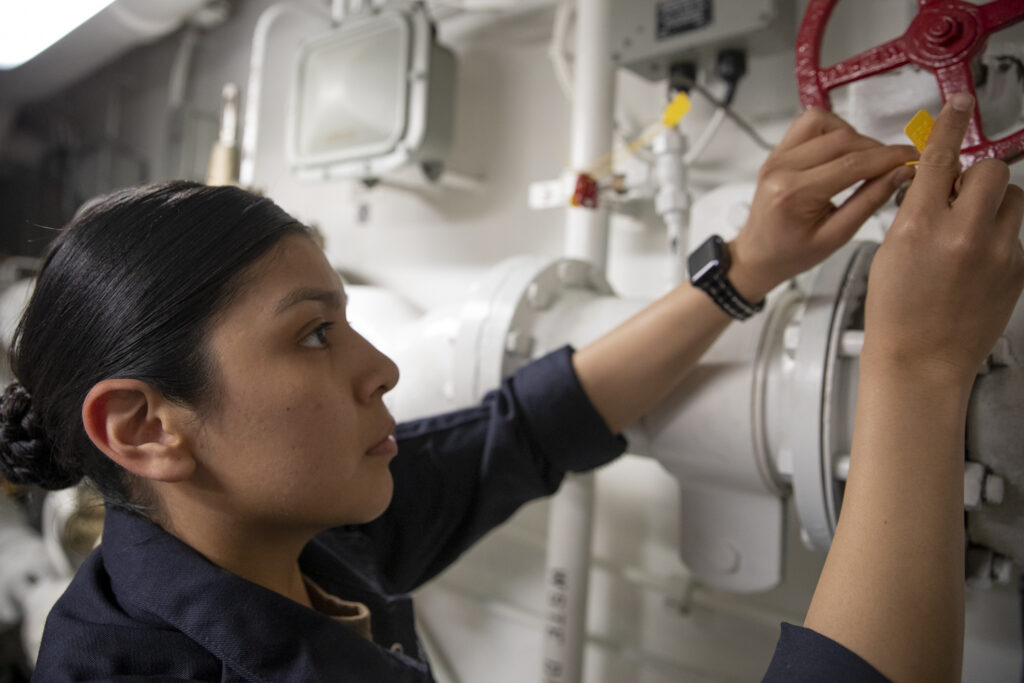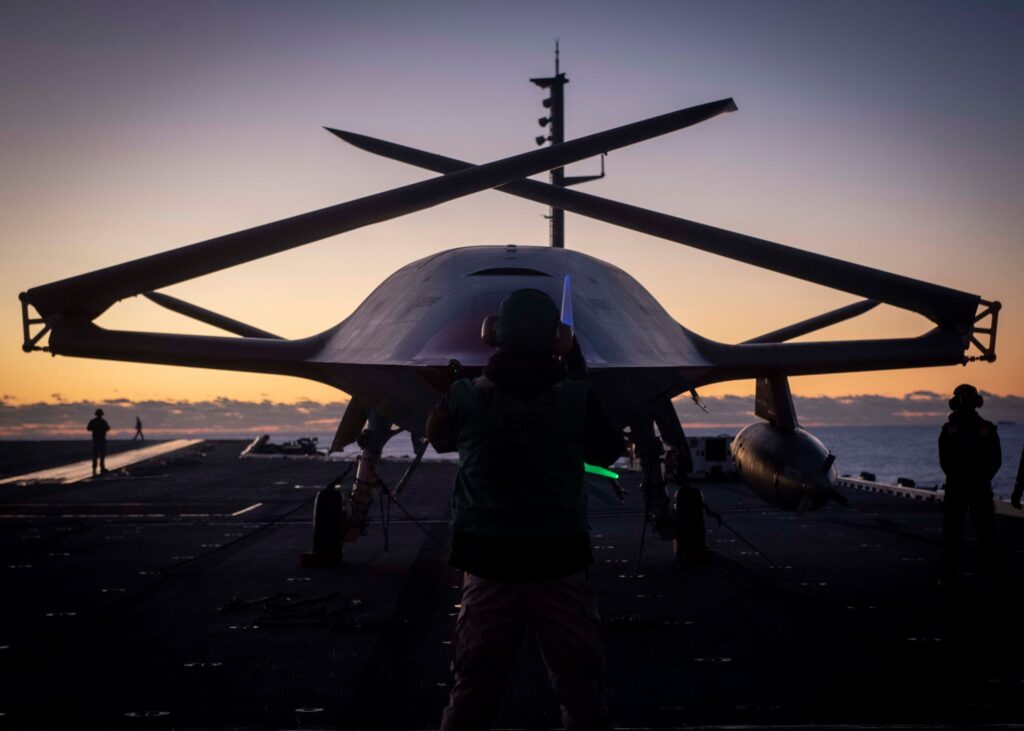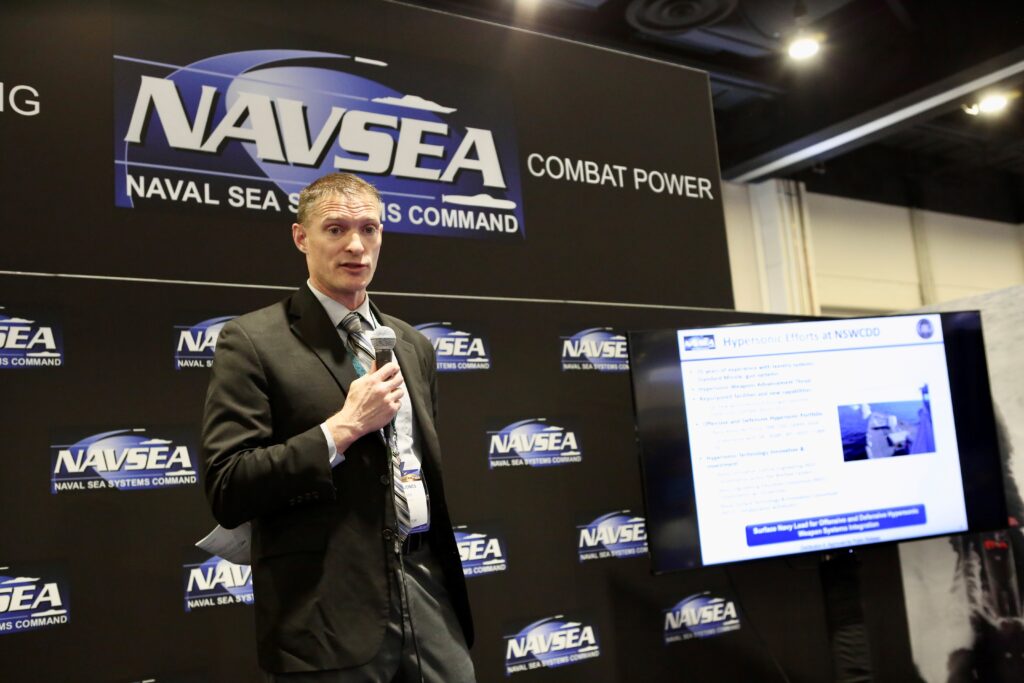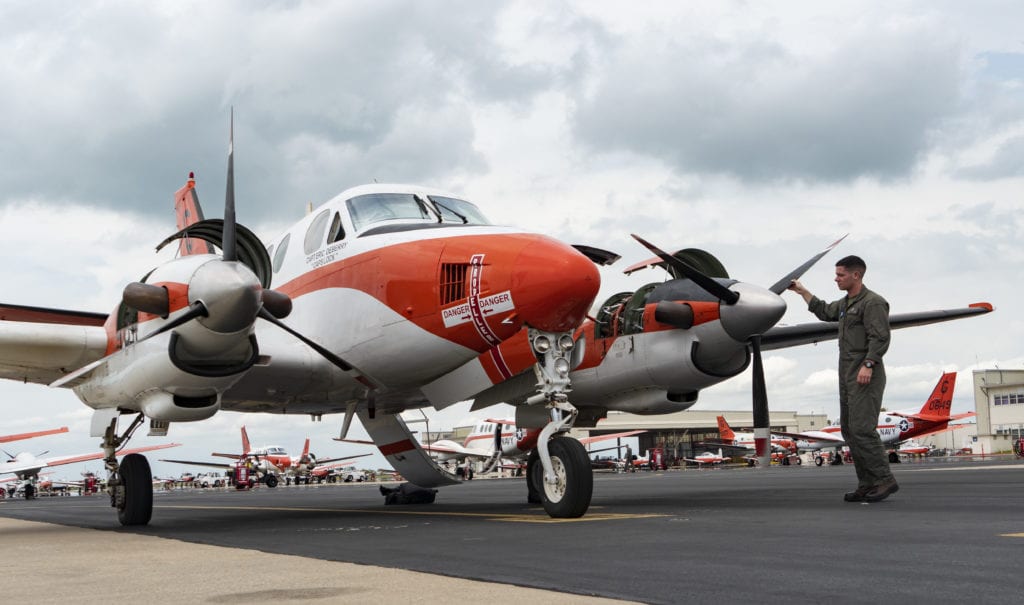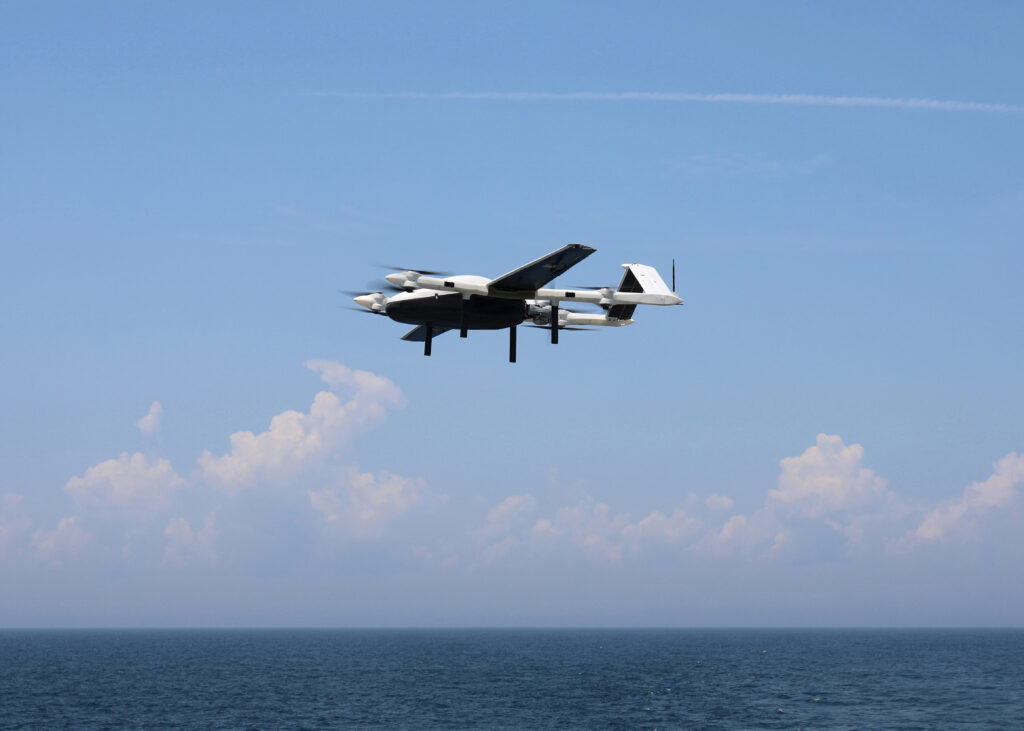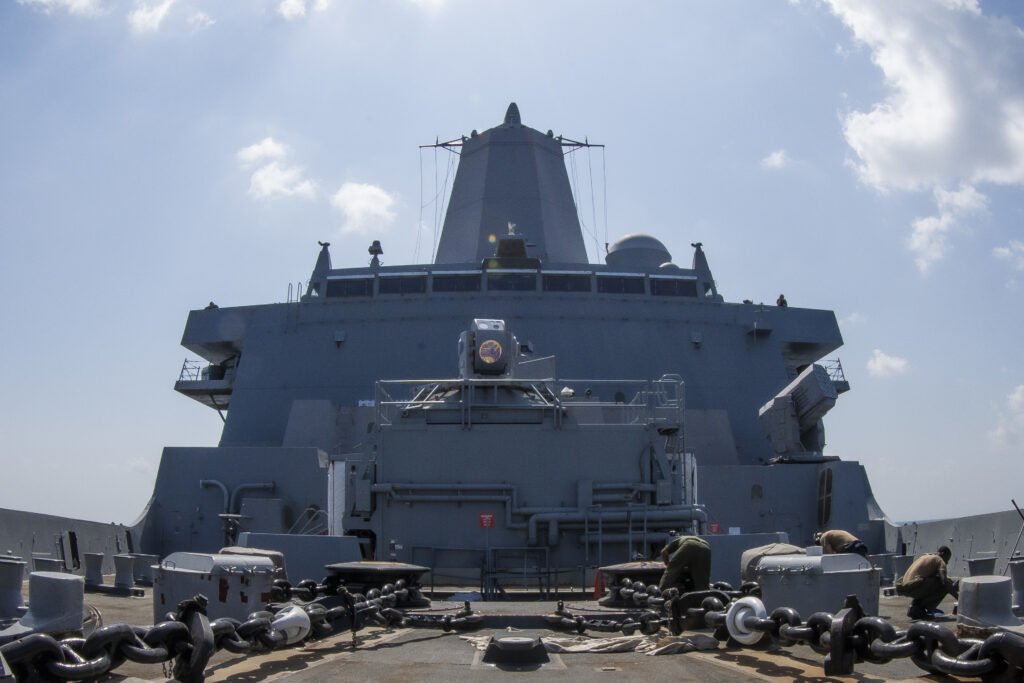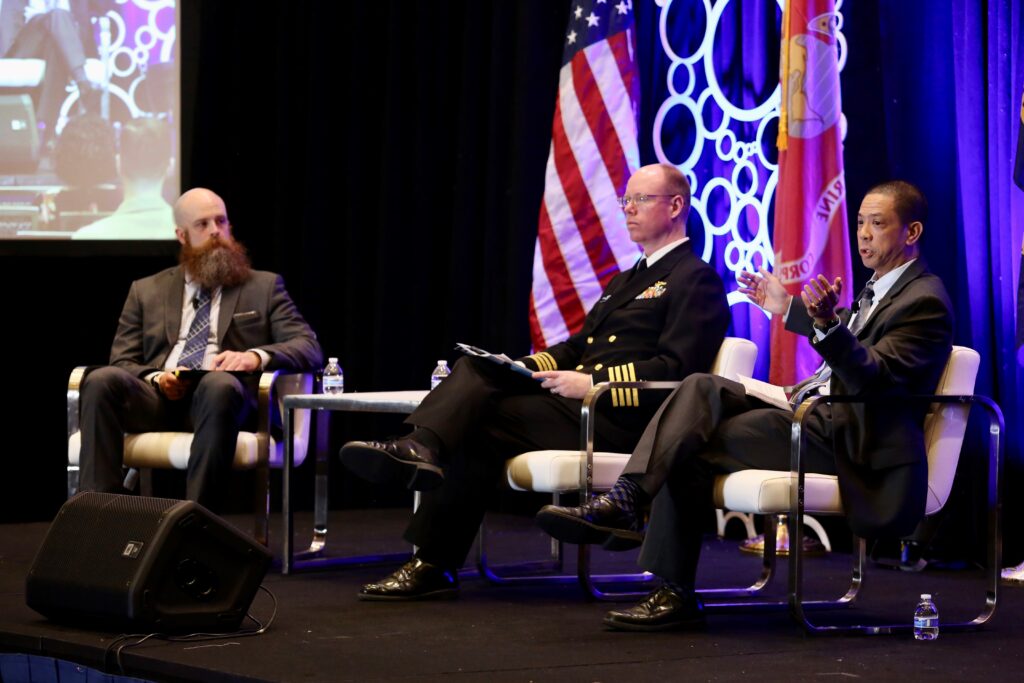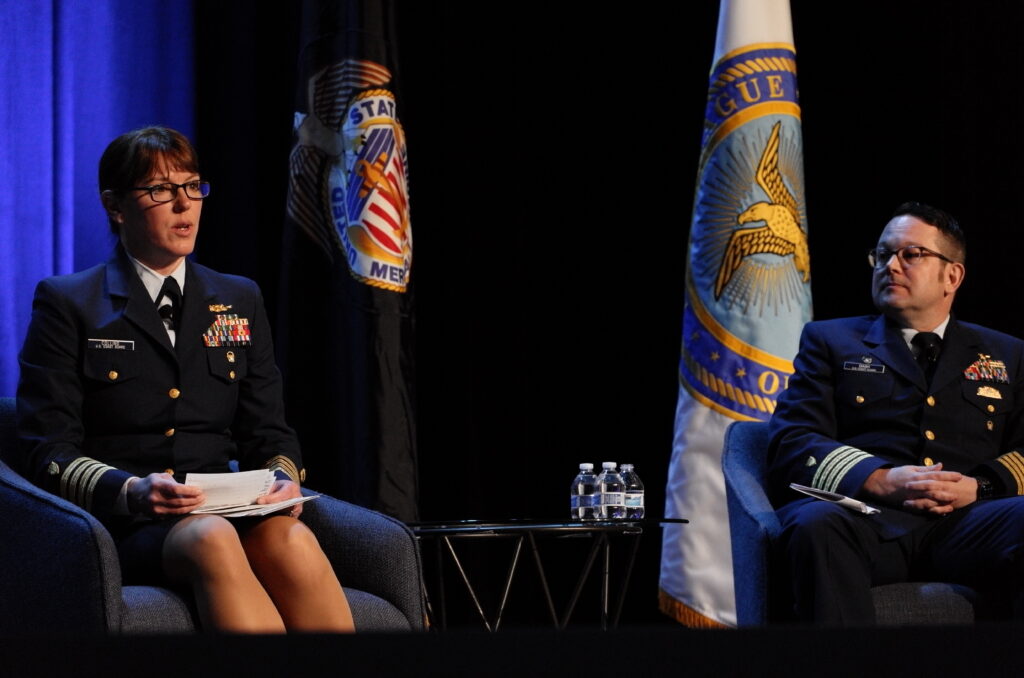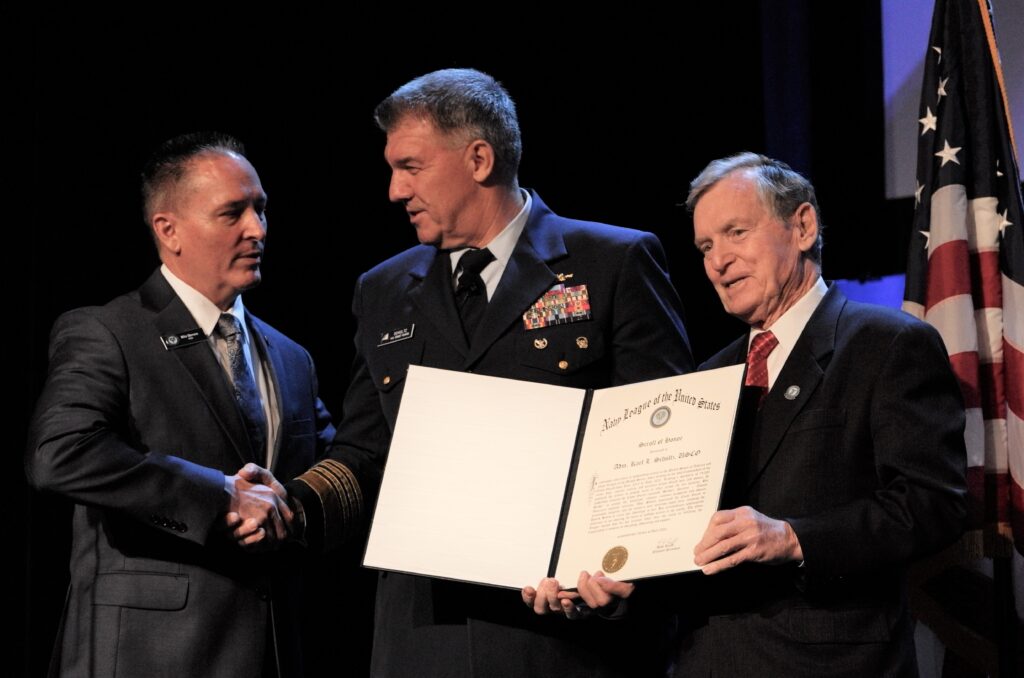COVID, War in Ukraine Complicate Global Supply Chain, Speakers Say
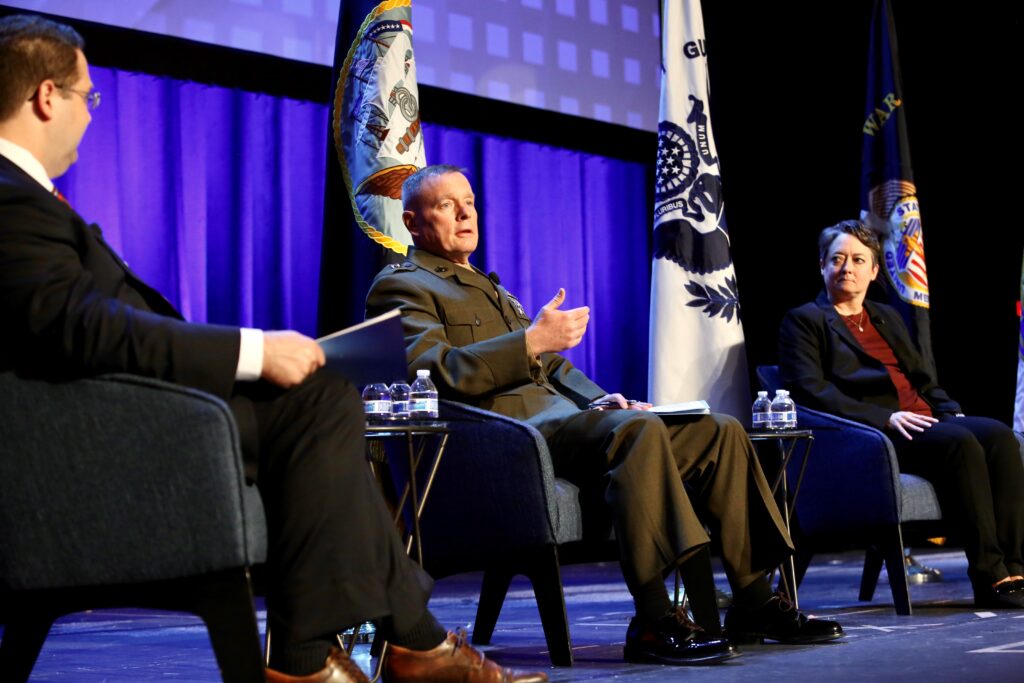
NATIONAL HARBOR, Md. — The global shipping network is extremely fragile in the wake of the COVID pandemic and the war in Ukraine, speakers on a panel about supply chain logistics said April 6.
Maj. Gen. David Maxwell, vice director of Logistics, Joint Staff, U.S. Marine Corps, said current Navy and Joint Staff operations are focused largely on the Ukraine crisis and “the distribution side of the house,” while also addressing broader challenges.
“Over the last month and a half, what you see is U.S. TRANSCOM’s [U.S. Transportation Command’s] ability to leverage really both the military capacity and capability that we have, as well as significant support from the commercial industry in being able to both deploy forces in a very dynamic, responsive time, but also to deliver material in support of Ukraine and the nation’s efforts to sustain the Ukrainian forces,” Maxwell said.
“As we have been spending that time delivering the forces, posturing them, as well as delivering material, [we are] stepping back into the next part of the question, which is, where do we reconstitute? How quickly can we reconstitute supplies and materials that not only have been drawn down out of Department of Defense resources but also that have been drawn down from partners and allies who have contributed? And how quickly and effectively and efficiently can we get back and reconstitute those materials for those partners and allies and U.S. forces?”
Kurt Wendelken, vice commander of Naval Supply Systems, said the military faces the same distribution issues as the commercial world, but the products are very different.
“A lot of these systems that we operate are built for us by key partners, and they are very complex pieces of equipment,” Wendelken said. “Although we did get an education in supply chain during COVID about its general fragility, the products that we’re dealing with are very complicated. They are not shampoo, they are not Snickers, they are not things from Amazon. [For] partners like [Lockheed Martin], it can take them a year to two years to go make those things for us, and that is assuming they understand what our demand signal is.”
Abby Lilly, vice president of global supply chain at Lockheed Martin Rotary and Mission Systems, said human capital is also a big concern. In recent months, she said, there has been a 15% to 20% turnover in some companies that support Lockheed Martin.
“Those companies are struggling to hire new workers to train them to do what we need to do,” Lilly said. “Labor availability is one of the key things that we are concerned about. If you think about the great resignation that has happened in this country in the last several months and the number of people who have left the workforce, that is affecting the defense industrial base.”
